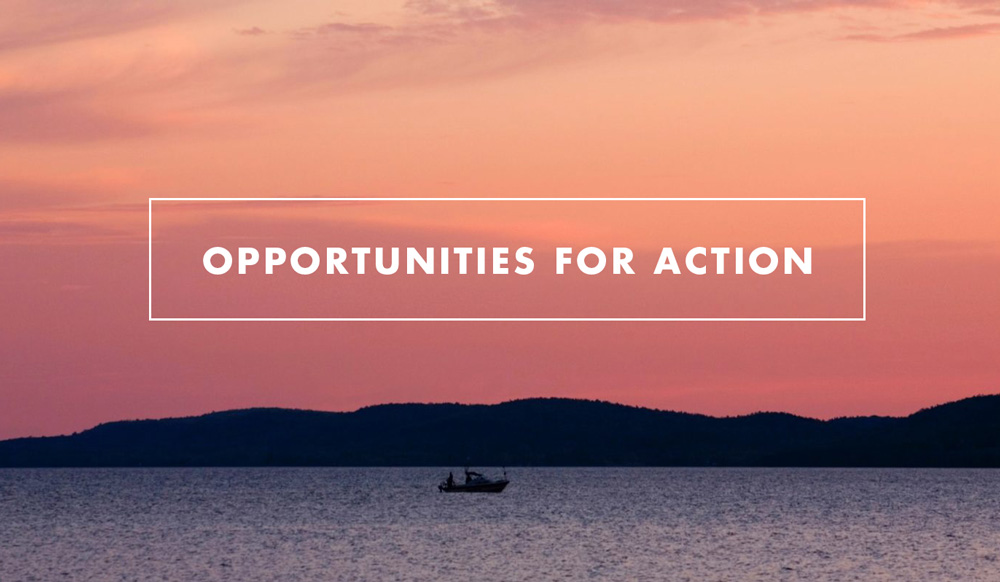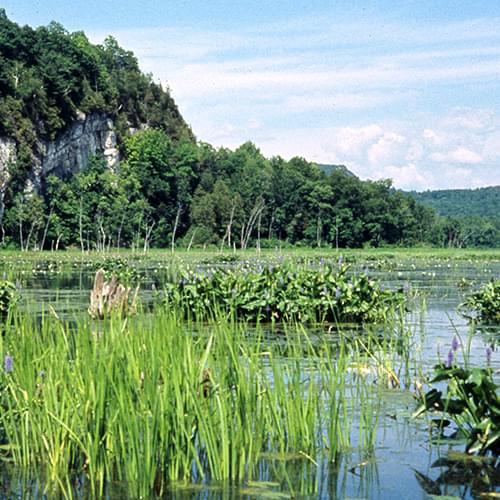Habitat

Habitat degradation, particularly fragmentation of habitat, is among the greatest threats to fish and wildlife populations. Wetlands, lakeshores, and stream corridors are especially important, providing critical habitat connections in the landscape. Dams, impassable culverts, and other stream barriers inhibit movement of migrating fish, invertebrates, and amphibians. Landlocked Atlantic salmon, eastern brook trout, and lake sturgeon are blocked from historic spawning waters.
The improvement of fish passage and habitat connectivity has become a conservation priority in the Basin. Recent work has focused on improving aquatic organism passage by mapping and prioritizing culverts for replacement, and protecting wildlife corridors by restoring riparian and floodplain habitat. Other projects have retrofitted culverts to improve passage for fish and other aquatic organisms.
Wetlands
The Lake Champlain Basin has more than 300,000 acres of wetlands that provide wildlife habitat, filter pollutants, and control flooding. Learn more about wetlands →


